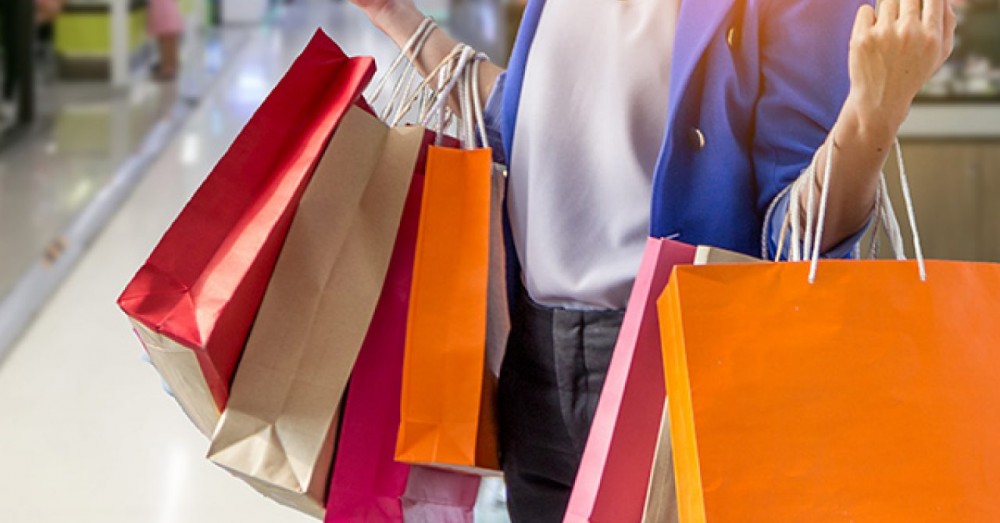How Retailers Can Improve the Post-Covid Shopping Experience
Along with many things that used to be "normal," retail shopping in 2020 and beyond will look a lot different from the past few years. If retailers want to stay in business, they must adapt to the times and get creative with their strategies.
From the importance of implementing visible signs of sanitation to the ways that an RFID solution company can help to manage store density, read on to learn how retailers can improve the post-COVID shopping experience.
1. Implementing visible signs of sanitation
As consumers start to leave their homes and enter stores, their biggest concern centers around hygiene in public places. In order to reduce these concerns and attract individuals into their store, retailers need to implement visible signs of sanitation. One of the most effective ways to build trust with customers is to have cleaning products and hand sanitizer available and within visitors' reach.
Additionally, you may want to provide touch-free shopping. You can do this by not allowing customers to touch an item unless they are buying it, closing your fitting rooms (but providing a flexible return policy), opting not to allow cash and, instead, accepting cards and contactless payment through phones.
Depending on the products you are selling, you may also be able to offer QR codes and barcodes that can be scanned on a customer's phone, allowing them to complete the transaction on their device and enable shipping the product straight to their homes.
The sooner retailers can implement visible signs of sanitation and touch-free shopping, the more they can attract consumers and enjoy a competitive advantage in the post-COVID world.
2. Introduce strategies to maintain social distancing
Consumers continue to be concerned about maintaining social distancing while in stores, so retailers need to introduce specific strategies to ensure that they implement safety measures. Otherwise, customers are going to be hesitant to visit retail outlets.
Depending on the retail store location and store category, there may be differing government guidelines. Some sites may have specific limits regarding the number of customers allowed inside a store at one time, and customers may or may not be required by law to wear masks while shopping. Plus, store layout variations, customer flow, and customer compliance will affect social distancing guidelines, too.
However, to ensure social distancing practices within your retail location are implemented effectively, you need to involve your employees in the decision-making process as they are the ones who will implement such guidelines on-the-ground.
3. Decrease density, increase flow
To lower the risk of virus transmission and help customers feel more comfortable, retailers must decrease the density of shoppers within the store at any given time. However, to balance the reduction in consumers allowed inside with boosting sales, retailers need to focus on
making the total shopping experience more efficient.
Gone are the days when you wanted to encourage slower browsing behavior. Now, you want to support faster customer decision-making so customers will enter your store, make a purchase, and then leave to allow another customer to start their shopping experience.
Introducing a high-quality automatic footfall counter into your retail location will help you understand the customer journey inside your business. It will also help you discern whether there are any dead zones in the space that can be rearranged or utilized to make the layout flow better.
What’s more, the best automatic footfall counter will provide you with relevant and timely data, making it easier to assign staff to specific shifts based on actual demand. Plus, the system will alert the necessary employees when there are high volumes of customers in the store so that strategies can be implemented to decrease density.
It is crucial that you meticulously staff the store to meet customer demand as you don't want consumers spending too much time waiting for help or to check out.
4. Create experiences within the store
To improve the post-COVID shopping experience, retail outlets need to place themselves as experience hubs in an effort to make them stand out from other shopping avenues (mainly online).
By providing unique in-store experiences, retailers can offer consumers an exciting way to browse and choose products while directing them to multiple channels to complete their purchases.
One option is to utilize AI that can operate as an in-store sales associate to offer personalized recommendations at the point of sale.
But, if AI technology isn't in the cards for you at the moment, you can train your human sales associates to provide more value to shoppers by acting as friendly consultants.
In other words, those working on the floor of the retail space need to know how to connect with each customer memorably and effectively. This human connection is something that can't be fully replicated in online shopping.
Promoting a sense of community is another way to boost store experiences as it helps you cultivate deep, meaningful relationships with consumers. This, in turn, makes it more likely that they will continue to support you.
5. Embrace an omni-channel strategy.
Ultimately, those retailers that will succeed in the post-COVID world have fully embraced an omni-channel strategy. This enables them to provide personalized experiences through
various channels and at each consumer touch point. It is no longer possible to ignore the demands of digital consumers – whether they are browsing or making purchases.
All retailers need to be prioritizing seamless ecommerce experiences that make it enjoyable (and simple) for consumers to browse, select, purchase, and return or exchange products. This also means ensuring your e-commerce sites are mobile-responsive and are aligned with the
rest of your digital experiences across channels.
In addition to expanding e-commerce capabilities, retailers are shifting gears to meet consumers' preferences, such as buy online and pick up in-store (BOPIS) models.
However, you decide to incorporate your omni-channel strategy; you need to ensure that you can support increased online orders and provide a reliable delivery or pickup experience.
What do you think are the most important steps that retailers need to take in order to improve the post-COVID shopping experience? As a consumer, what are you hoping that retail stores will do to make you feel safe and comfortable?
Let us know your thoughts and any additional insights in the comments below!
Share This Post















